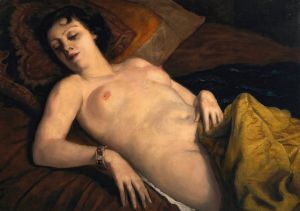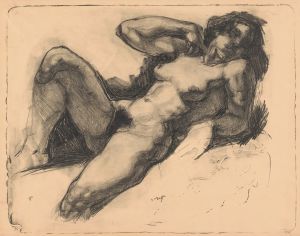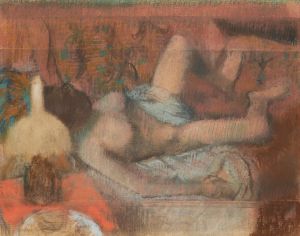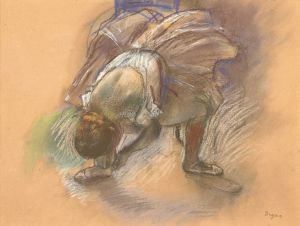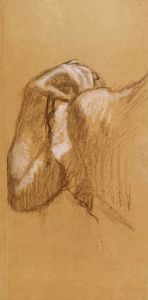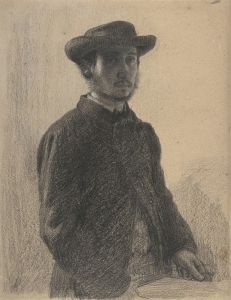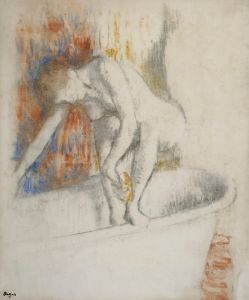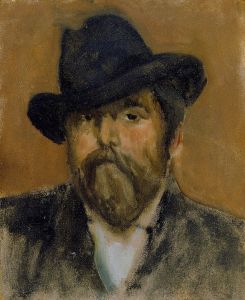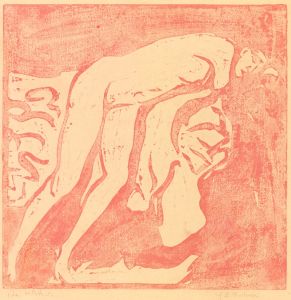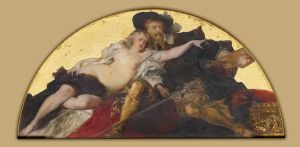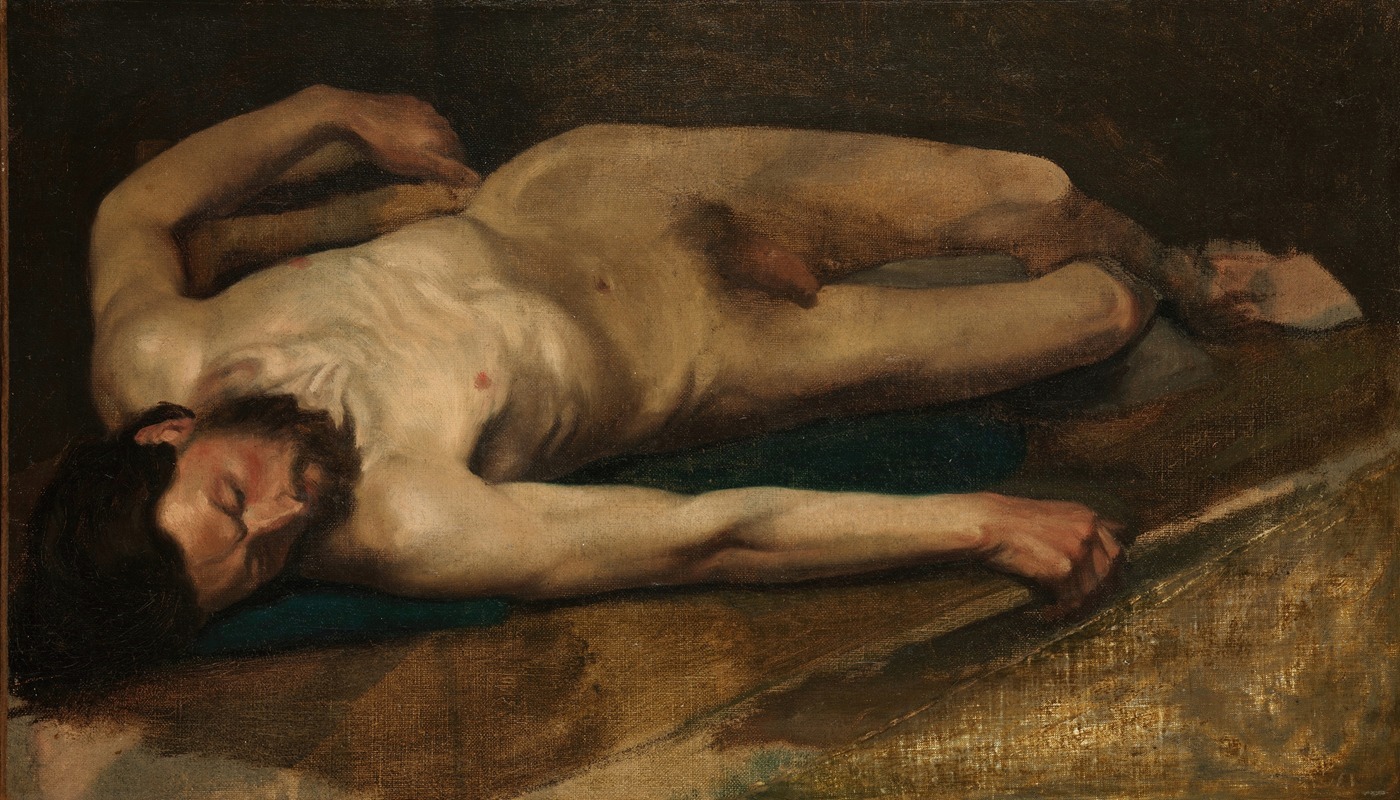
Male Nude
A hand-painted replica of Edgar Degas’s masterpiece Male Nude, meticulously crafted by professional artists to capture the true essence of the original. Each piece is created with museum-quality canvas and rare mineral pigments, carefully painted by experienced artists with delicate brushstrokes and rich, layered colors to perfectly recreate the texture of the original artwork. Unlike machine-printed reproductions, this hand-painted version brings the painting to life, infused with the artist’s emotions and skill in every stroke. Whether for personal collection or home decoration, it instantly elevates the artistic atmosphere of any space.
Edgar Degas, a prominent French artist known for his contributions to Impressionism, is celebrated for his diverse body of work that includes paintings, sculptures, prints, and drawings. Among his lesser-known works is "Male Nude," a piece that exemplifies his skill in capturing the human form with precision and sensitivity.
"Male Nude" is a study of the male figure, showcasing Degas's interest in anatomy and movement. Unlike many of his contemporaries who focused on the female form, Degas's exploration of the male nude is relatively rare, making this work particularly noteworthy. The piece is executed with a keen attention to detail, highlighting Degas's mastery of line and form. His approach to the human body is both analytical and expressive, reflecting his academic training and his innovative spirit.
Degas's technique in "Male Nude" involves a careful rendering of musculature and posture, demonstrating his understanding of the body's structure. This work is believed to be part of his broader exploration of the human figure, which he pursued throughout his career. Degas often worked from live models, a practice that allowed him to capture the subtleties of movement and the play of light on the skin. This dedication to studying the human form is evident in the lifelike quality of "Male Nude."
The context of Degas's work during this period is essential to understanding "Male Nude." In the late 19th century, the depiction of the nude was a significant aspect of academic art training in France. Artists were expected to demonstrate their ability to render the human body accurately, and Degas's work reflects this rigorous academic background. However, Degas was also known for pushing the boundaries of traditional art, and his treatment of the nude often included unconventional compositions and perspectives.
"Male Nude" is not as widely recognized as some of Degas's other works, such as his ballet dancers or racehorses, but it remains an important part of his oeuvre. It provides insight into his artistic process and his commitment to exploring the complexities of the human form. The piece is a testament to Degas's ability to blend classical techniques with modern sensibilities, a hallmark of his artistic legacy.
While specific details about the creation and exhibition history of "Male Nude" are limited, the work is a valuable example of Degas's skill and innovation. It contributes to the broader understanding of his artistic pursuits and his place within the Impressionist movement. Degas's exploration of the male nude, though not as extensive as his studies of female subjects, adds depth to his portfolio and highlights his versatility as an artist.
In summary, "Male Nude" by Edgar Degas is a significant work that underscores the artist's expertise in depicting the human figure. Through meticulous attention to detail and a unique perspective, Degas captures the essence of the male form, contributing to his reputation as a master of both traditional and avant-garde art.





